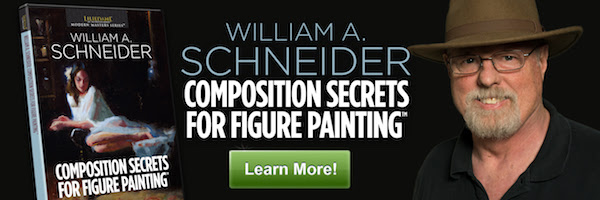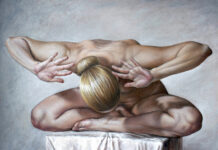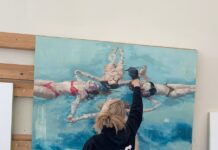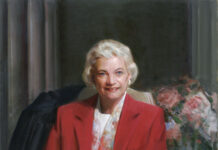If your drawing style falls within the category sometimes known as “Art Class Awkwardism,” you’ll want to see what this teacher has to say.
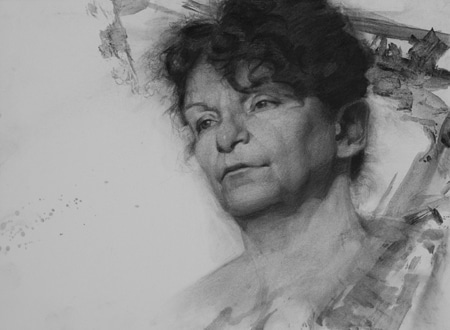
On Drawing and Painting: Look for the Obvious
By Terry Kelly
(www.terrykellystudios.com)
In my classes we sometimes look at paintings and drawings to see how different artists handle design, values, edges, and so on. I try to get my students to look past the style of the artist and focus just on what’s happening with the drawing. But then what about style? Where does that fit in? And where does it come from? In many paintings and drawings it’s the most obvious thing. Why is something that is so obvious seldom mentioned?
I remember asking a teacher about how to develop a style. He just said, “Style!? You already have a style.” To me this was like hearing I had distinct handwriting. My handwriting, though it’s mine, isn’t really something that I care to frame, and my drawings at that time exuded that familiar style called Art Class Awkwardism. Around this time there was an exhibition at the Getty Museum called “Drawings by Painters.” I was amazed that, at a distance, I could associate most of the drawings with the correct artist because their drawing and painting style were interlinked. As I already loved to draw, I hoped my painting style would evolve from it.
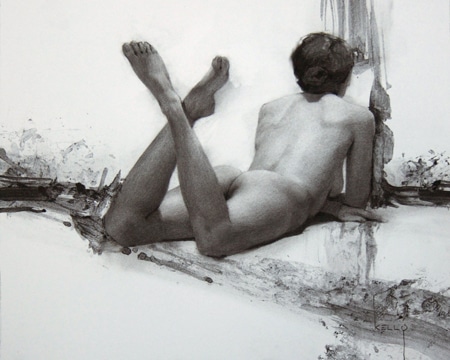
The first steps in style, like handwriting, develop by imitation from watching somebody do it and then following along. A lot of art classes use this format for teaching. I found that some of this worked because it came easily, but then there was a lot of frustration trying to adopt someone’s quirks as well as drawing. This became more evident when I went through a phase of imitating the style of whoever was the current hot artist. It always looked like a poor imitation, and I was disappointed that I didn’t feel any connection with the end result. I was trying to squeeze into a style that did nothing to flatter me, pinched in the wrong places, and should be let down a few inches in other areas.
I remember hearing Bono once say that when U2 first got together they were so bad at playing other people’s songs, they had to write their own. As television has taught us, advice from celebrities is always worth heeding, so after my brief stint at art school, I just tried to draw in a way that felt most natural and focused on what interested me.
Related Article > Drawing Portraits and the Challenge of Sanguine Chalk

Random abstract shapes have always held a fascination for me, sometimes for just the interest in their uniqueness and other times for what they suggest. Also I’ve always admired accurate draftsmanship, either things drawn from life or out of someone’s imagination. I was living with a paradox. These are the things that interest me, but they are usually situated at the opposite sides of the art world. Which direction should I go?
After a few painting classes and picking up what I could from teachers and handbooks in regards to paint and mediums, I felt that I didn’t really understand how paint “worked” — what to do when and where, and how come I seem to be doing what you’re doing, but mine doesn’t work like yours? So I started playing with paint. This certainly satisfied my craving for abstract shapes, and in the process I developed a love for how paint looks.

When looking at Old Master paintings, I love to find that zone of viewing where a painting goes from representing something to becoming brushstrokes and then to an overlapping random shape. Discovering some things that paint does ended up bringing me full circle to wonder about drawing mediums like charcoal and what else it could do. What had I missed? Over time I gravitated towards using the mediums in a way that worked for me and helped to portray things the way I want. In the process I noticed some sort of style seems to have evolved.
Currently, I’m satisfied with some of the pieces that I draw and paint. I feel connected to them. Other pieces are putting up a fight and refusing to show me their potential. Regardless of how a piece is working, however, I no longer worry about whether they reflect my hand. In pursuing what interests me, I developed something that reflects me, or, should I dare to say, my own style.

As I once read in “Fear and Art”: “In large measure becoming an artist consists of learning to accept yourself, which makes your work personal, and in following your own voice, which makes your work distinctive.”


